Yayoi Kusama ’s Infinito presente exhibition at the Palazzo della Ragione in Bergamo, which opened on November 17 last year and runs until March 24, is about to end. With a record sell-out six months after its opening and a turnout of more than ninety thousand visitors, the exhibition, curated by Stefano Raimondi, is confirmed as the latest significant episode in the institutional exhibition history of theJapanese artist on Italian soil, following recent retrospectives at Palazzo Reale(A retrospective, 2020-21), MACRO and MAXXI in Rome(Look Now, See Forever, 2018 and Beyond the Limits, 2002), MART in Rovereto(A Dream I Dreamed, 2009) and MADRE in Naples(Dots Obsession, 2006). What is new, compared to previous cases, is the first-ever presence in Italy of the installation Fireflies on the water (2002), one of Kusama’s most successful Infinity Mirror Rooms , which came on loan from the permanent collection of the Whitney Museum of American Art in New York.
The exhibition is part of the program of the Contemporary Art Festival ARTDATE, an event organized by the cultural association The Blank and Palazzo Monti in the cities of Bergamo and Brescia, and is hosted in the Hall of the Orobic Palazzo della Regione. In itself evocative because of its 16th-century architecture and its inclusion in the urban context of Bergamo Alta, the location has been redesigned to accommodate an essential and functional spiral exhibition itinerary in which the public could penetrate, discovering the artist little by little, until reaching the heart of the exhibition, which is precisely the environmental installation Fireflies on the water.
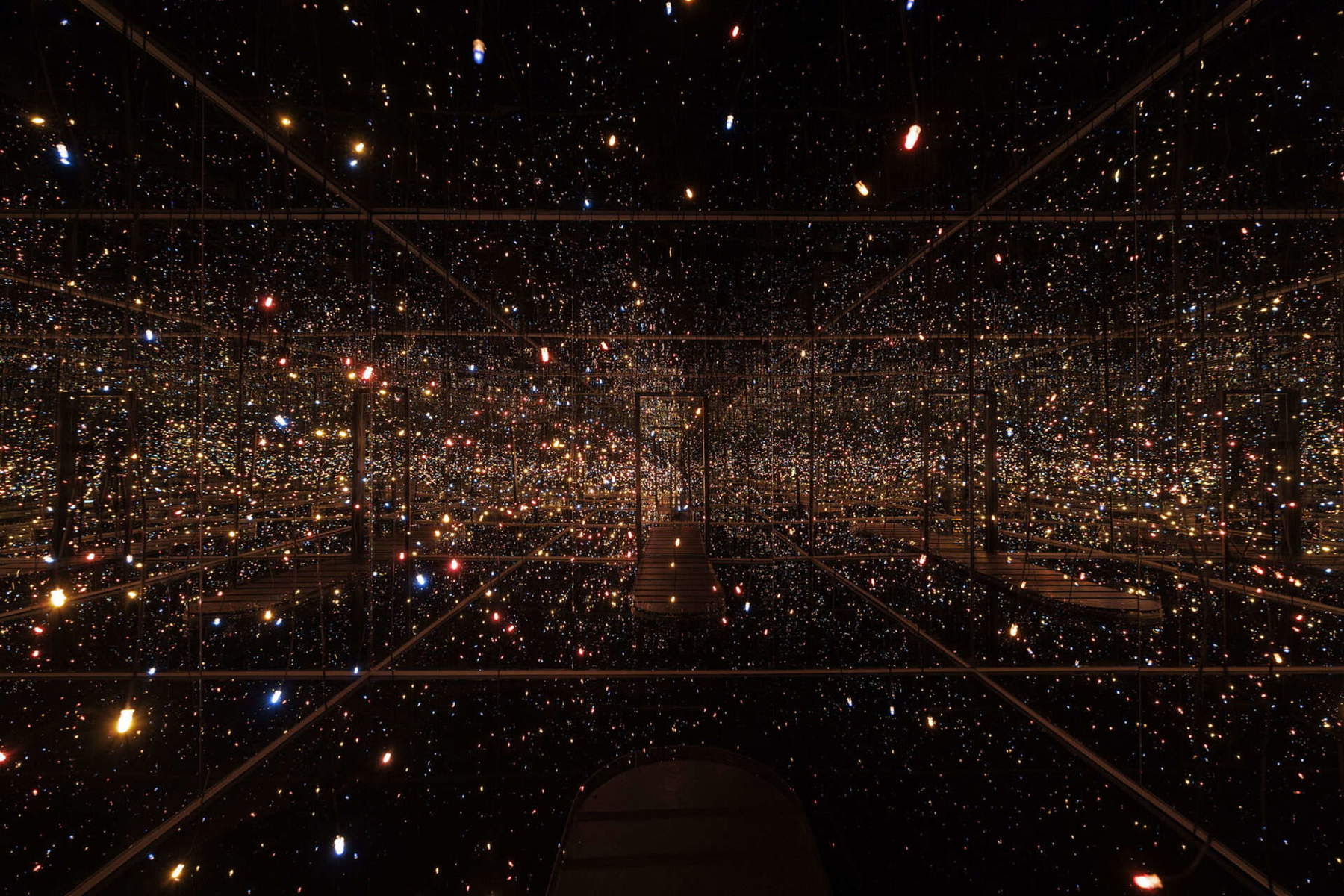
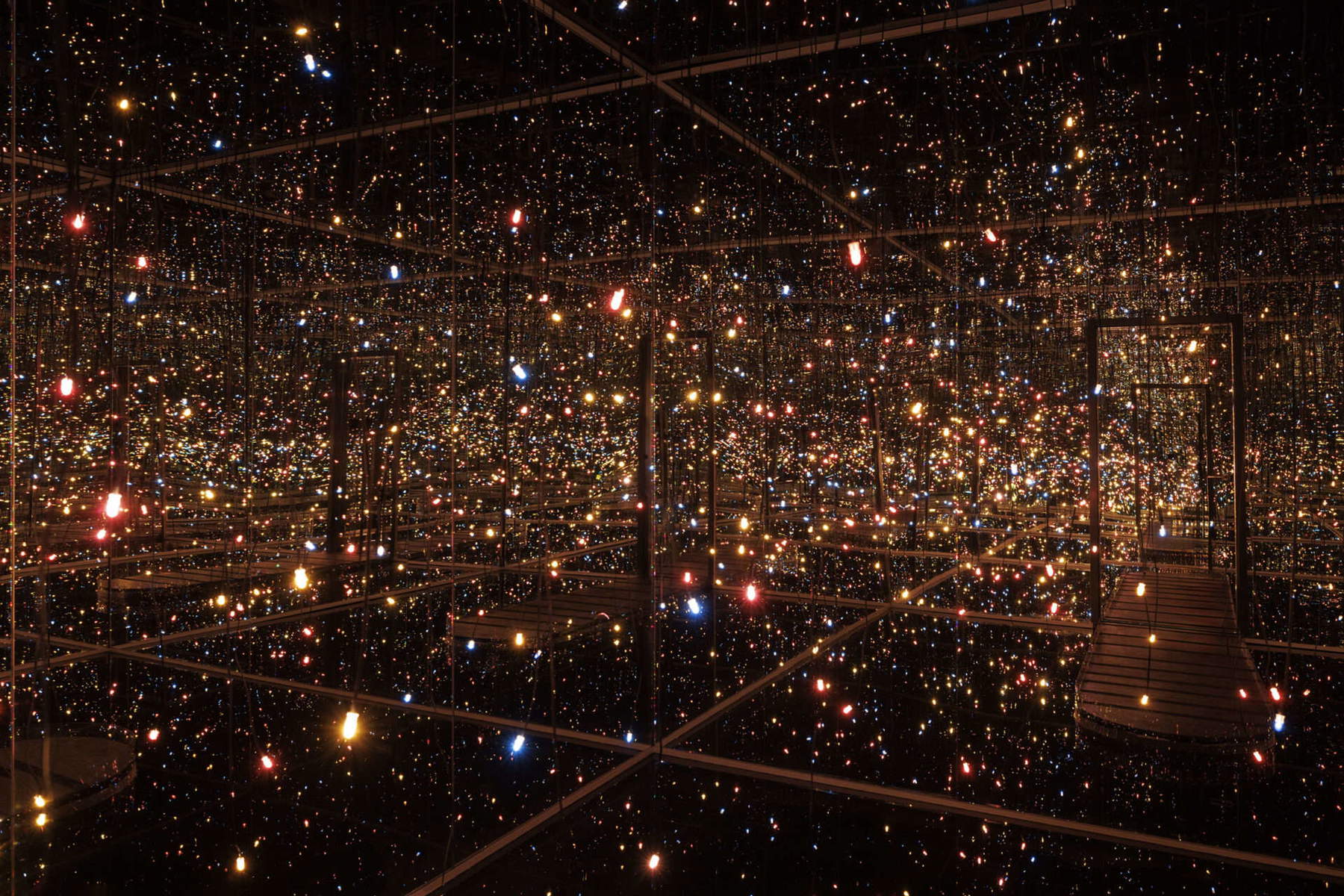
Along the wall that guides him to the work, the visitor is able to erudite himself on Yayoi Kusama’s biography thanks to a graphic chronology that unfolds through the most salient moments of the artist’s life: her childhood, marked by difficult relationships with her family (1929-1945); her formative years in Tokyo and her 1952 debut exhibition in her native Matsumoto, Japan (1948-1954); then her contacts with Georgia O’Keeffe and her move to America (1955-1958), which coincided with the birth of the Infinity Net Paintings, a series that became iconic and would establish Yayoi Kusama internationally. Of key importance is 1965, the year in which Kusama began to experiment with sculpture and then with the installation and environmental dimensions, giving rise to series that address themes both extremely intimate, such as the artist’s relationship of aversion and revulsion toward the sexual sphere, and social in scope, such as the overconsumption of food in postwar America. Also from 1965 is the first Infinity Mirror Room, which officially kicks off the successful series of installations with which the Japanese artist questions universal themes such as time, space, memory, the concept of infinity, repetition, accumulation and multiplication. Continuing on, the chronology recalls Kusama’s connection with Lucio Fontana, an artist who would have the merit of introducing her clandestinely to her first Venice Biennale in 1966, and the main successes and collateral activities of the decade 1967-1977, not without mentioning the theme of mental illness that afflicted the artist, and which led her to voluntarily hospitalize herself in 1977 in a clinic in Tokyo, where she currently resides and works. The last stages of the chronology recount the artist’s great rediscovery, thanks to a major retrospective in New York in 1989 and Akira Tatehata’s invitation to the 1993 Venice Biennale as the sole artist for the Japanese Pavilion.
The opening corridor leads to the central room, also set up with the same plasterboard walls that demarcated the entire exhibition route. It is there that, under the supervision of an attendant and a security guard who manage the access-controlled flow, after a short wait one finally enters the interior of Fireflies on the water: one enters it alone and stays there for a maximum time of one minute. The reason for such attentions is soon revealed, as soon as one hears the door to the cubicle that houses the work close behind one’s back and one finds oneself on a catwalk that seems to stretch across the threshold of a liminal, liquid non-environment, suspended in nothingness and in which the dominant color is black: the environment is not completely dark, however, thanks to a dense galaxy of small point lights, 150 in all, whose reflection is multiplied infinitely by the sheets of mirrors on four of the six interior surfaces of the chamber, with clear references to the myth of Narcissus that has always been dear to the artist. Since the floor is covered with a layer of water, it contributes in its own way to the visual effect of mirroring and multiplication of the view, while the vacuum created is filled by the silence that envelops the whole. The installation generates the perception of being in an unreal dimension, devoid of reference points and space-time coordinates, in which the only certainties to cling to are the small sources of light that even it is not possible to understand what they are powered by or what they indicate: they simply exist. The result is a range of sensations, perceptions and emotions that vary from a state of well-being and peace, liberation and pleasure, to a sense of bewilderment, claustrophobia, fear and anxiety. The silence and darkness, barely fragmented by lights, might equally suggest the idea of being inside a cocoon or placenta, there where, in short, the stilla of life has just ignited and is waiting to take shape; and yet, at the same time, the mirrors infinitely amplify the darkness and one’s own image suspended in it, forcing the visitor into a confrontation with the inner self and thus crystallizing it in an infinite present.
Once past the work, one finally continues along a final corridor that emerges into a small room dedicated to an interactive activity offered to visitors: invited to leave a sign of their visit, they have the opportunity to decorate the round red and silver stickers received free of charge at the entrance, and apply them wherever they wish on the vertical walls of the room. The visual effect is that of a translucent flake layering that is also seemingly endless, in keeping with the theme of the exhibition, which is useful for getting an idea of the massive presence of visitors involved and the public’s reception of the exhibition project.
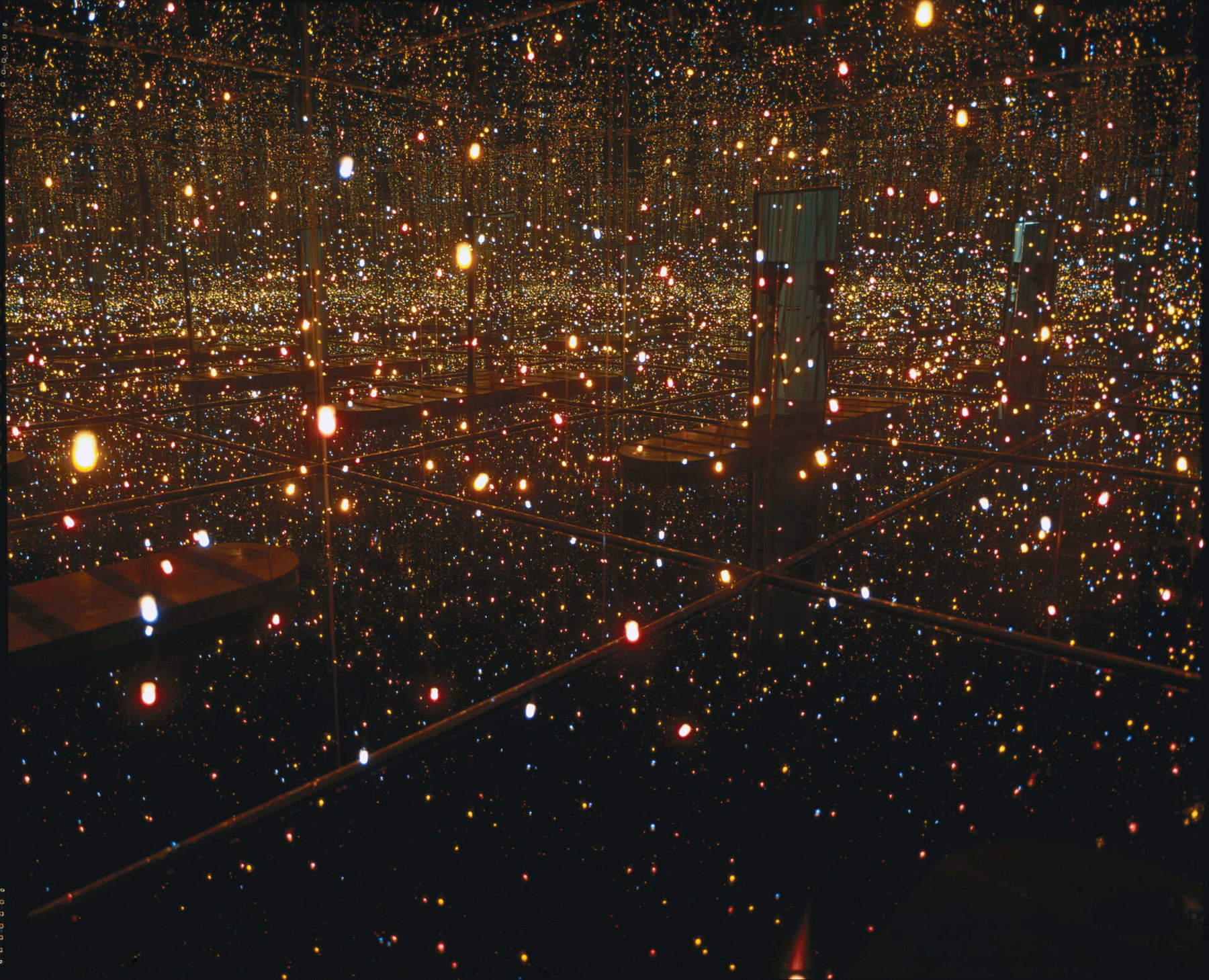

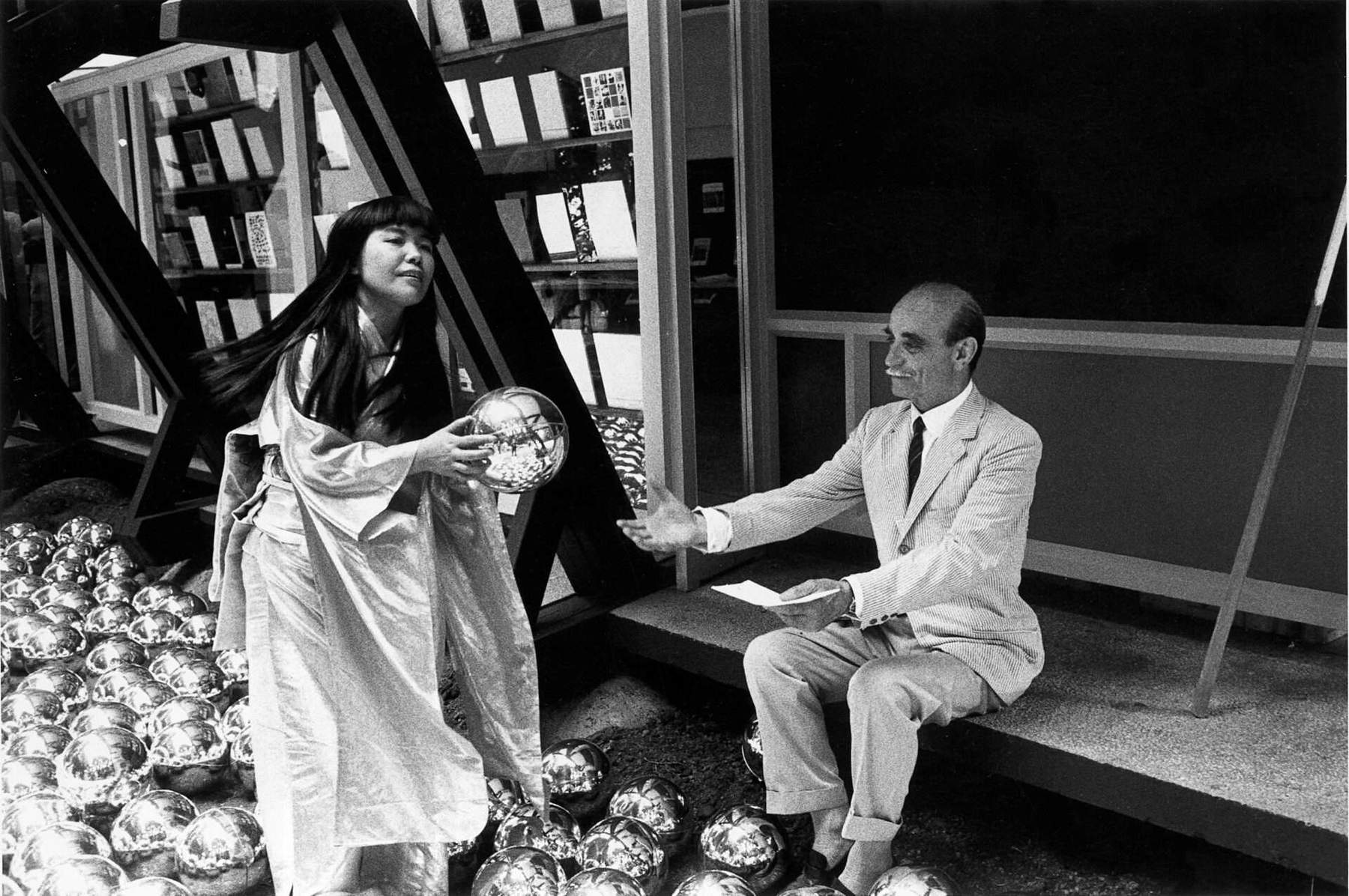
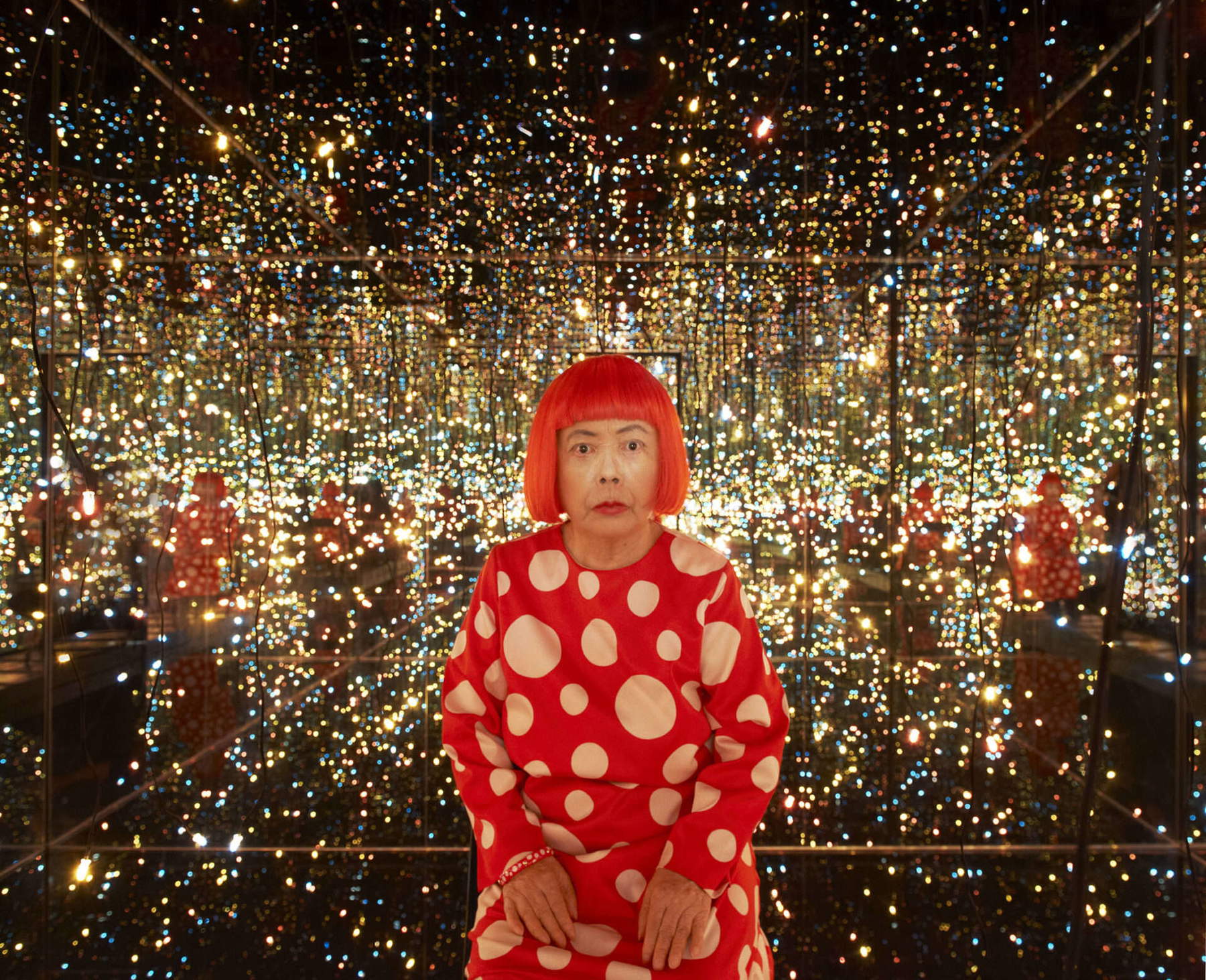
This initiative, chosen to involve the public and thus spread the echo of the exhibition, reflects a marketing strategy that is very frequent (but with outcomes that are not always convincing) in the event business, aimed at making the visitor the protagonist and an active part of the event. Although here it renders the idea of the broad transit within the exhibition, this last part seems to take away space within the itinerary that could perhaps have been devoted more to delving deeper into Kusama’s work, and is reduced to a horror vacui of inscriptions, signatures, drawings and doodles that on the one hand are for the most part barely legible, since they are buried by the most superficial layers, and on the other hand give room for interventions that are often out of keeping with the theme of the exhibition, including vulgar drawings and doodles of no value. With the result of a great visual hodgepodge that may be translatable into a figure, however approximate, on the number of visitors incentivized, but that does not leave relevant traces on the emotional residue aroused by the visiting experience.
A priori of personal taste, in the final analysis, accepting the compromise of the inevitable interactive component and superseding (with no little regret) a few grammatical and consecutio temporum errors in the texts accompanying the itinerary, the exhibition Infinite Present turns out to be a’stimulating experience to get to know, but above all to experience firsthand Yayoi Kusama’s art and its centrality in the contemporary context, with the more unique than rare opportunity to physically and sensorially experience one of her famous Infinity Mirror Rooms, otherwise only available on U.S. soil.
Warning: the translation into English of the original Italian article was created using automatic tools. We undertake to review all articles, but we do not guarantee the total absence of inaccuracies in the translation due to the program. You can find the original by clicking on the ITA button. If you find any mistake,please contact us.